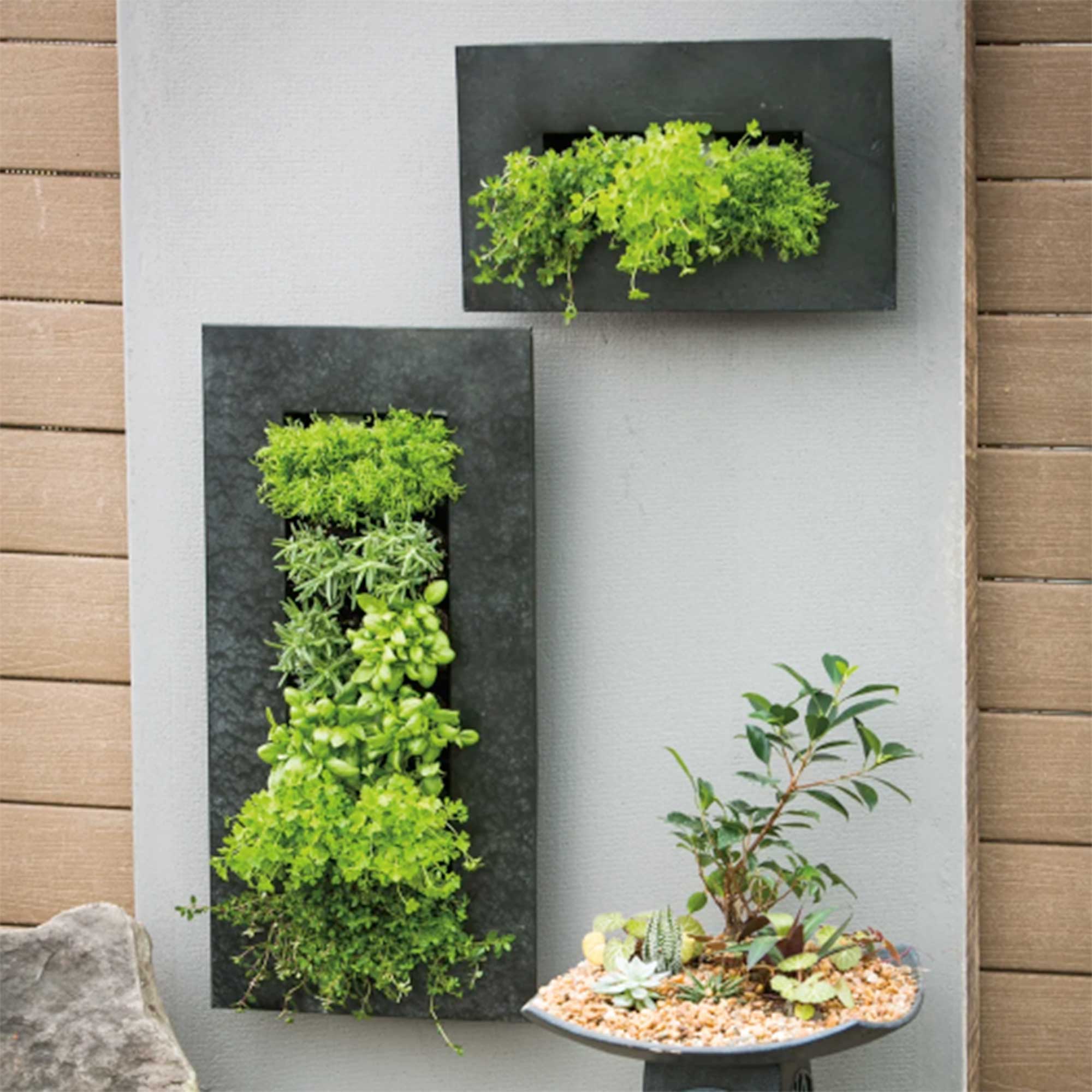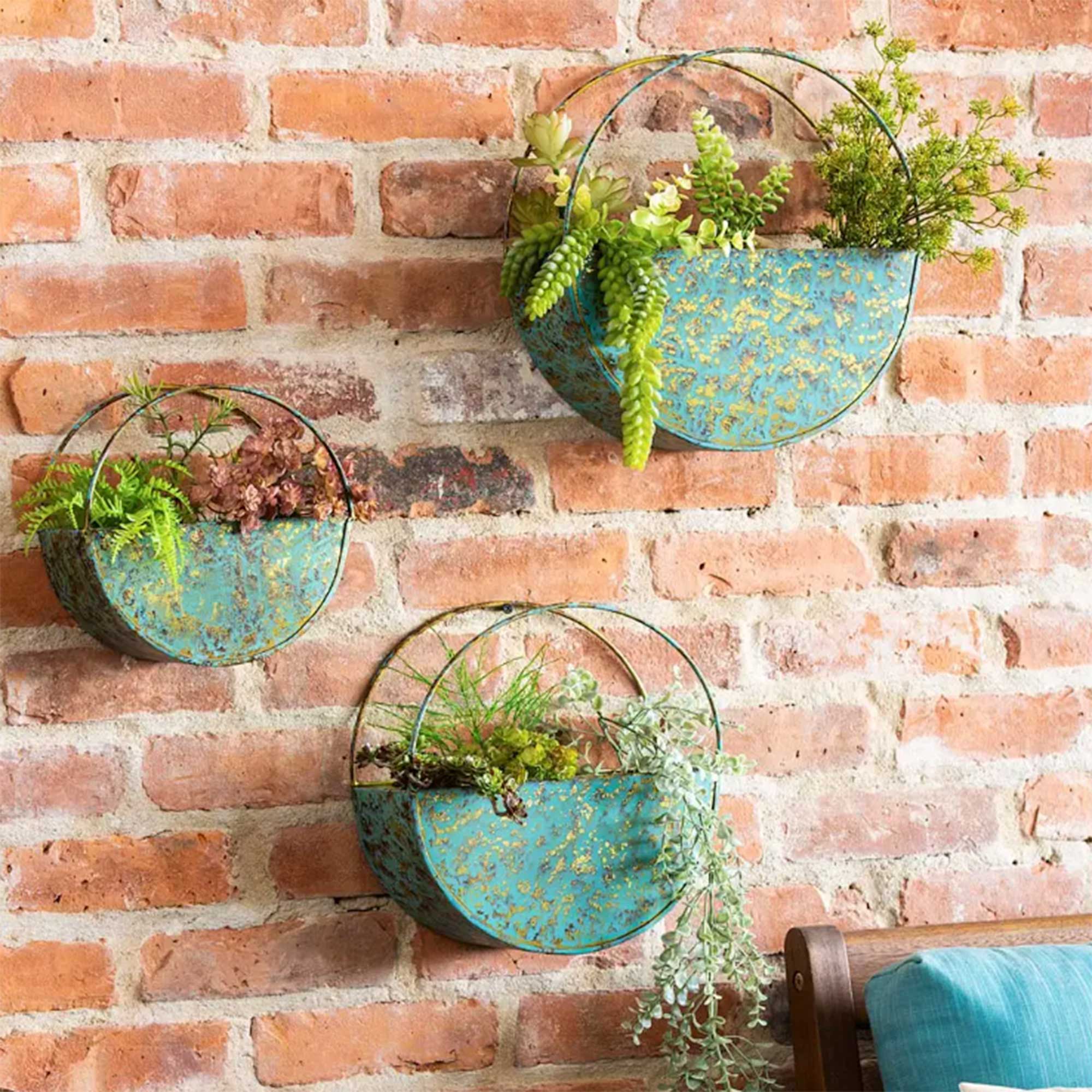Indoor herb garden ideas – how to display herbs artfully and practically in your home
Herbs can have just as much visual appeal as the rest of your indoor plants
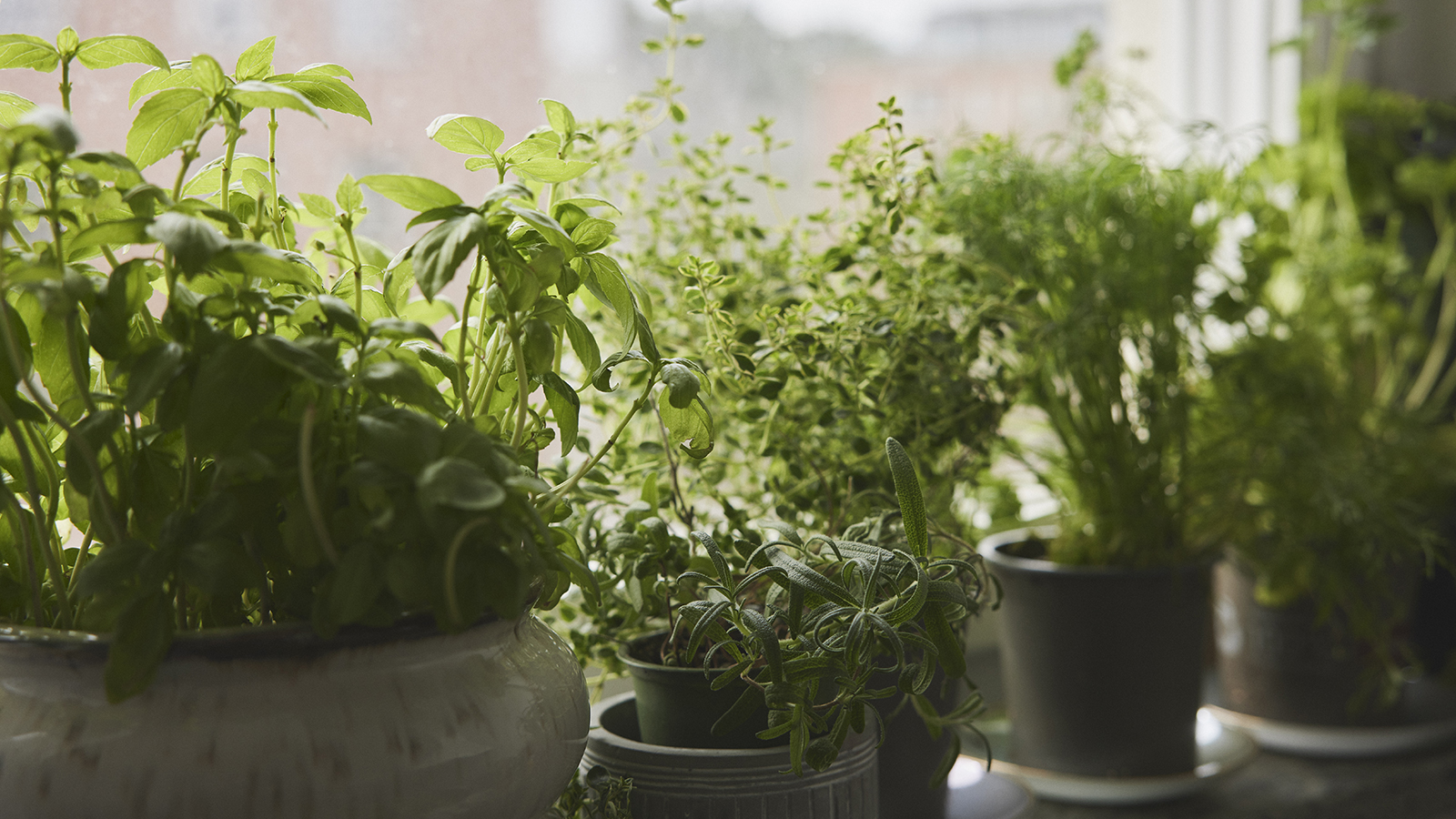

Growing herbs in your home is a lovely way to brighten up your interior scheme. Herbs make most sense grown in a kitchen, so they are easily accessed. However, if your kitchen doesn't receive enough natural light, you may need to look at other areas of your home.
Growing herbs indoors doesn't require much space, as evidenced by many of our suggestions here for window boxes, vertical wall planters and pots that can hang from the wall or ceiling.
Best of all, growing herbs for your indoor garden means accessibility and speed when you're cooking: just snip a few sprigs of your chosen garnishes directly from the plant, and add more flavor to your recipes in minutes.

7 Indoor herb garden ideas for a practical and pretty display
'The important thing to remember when choosing varieties for your indoor herb garden ideas, is to select herbs which favor similar conditions. Particularly if you're grouping them together in the same pot, they'll need to be getting the right amount of light, drainage and water,' says deputy gardens editor at Homes & Gardens, Teresa Conway.

Teresa has been creating and editing a variety of rich garden content for over six years, across many brands including Homes & Gardens, Country Homes & Interiors and Living Etc. She was Deputy Editor on Gardeningetc.com as well as a judge on the panel at the prestigious Society of Garden Designers awards.
1. Use a living wall for indoor herbs to maximize your space

'If surface space is in scant supply, try making a feature of your herbs with a modular living wall system. This is an investment piece, with professional installations ranging from around a hundred dollars to over a thousand,' says Teresa Conway.
'It is possible to buy self watering planters which can be fixed to the wall, like this self watering plastic wall planter at Wayfair. Once your herbs are established you'll have a thriving space,' she says.
Many herbs will do well when grown vertically. Why not plant some trailing varieties, such as cilantro and parsley, alongside sturdier stems of rosemary.
Design expertise in your inbox – from inspiring decorating ideas and beautiful celebrity homes to practical gardening advice and shopping round-ups.
Shop living wall ideas
2. Create a uniform display for a contemporary look
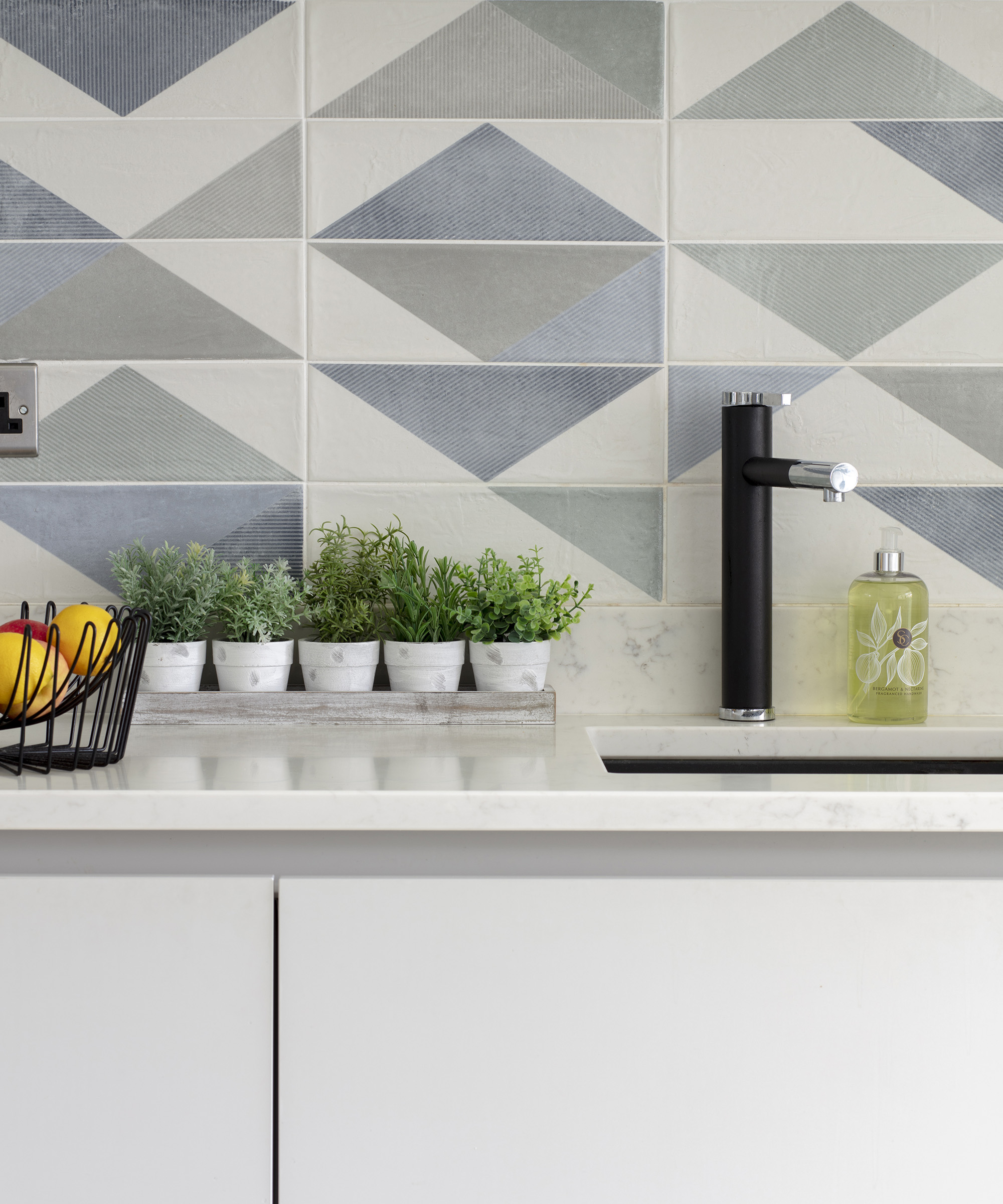
'Growing herbs in a kitchen often conjures up visions of a rustic farmhouse style interior. If that isn't your style, then it is possible to create a sleeker look to match with your decor,' says Teresa.
'Uniformity is key when achieving this, therefore use pots of the same size, shape and pattern and line them up along your kitchen countertops. Growing herbs in pots near the sink may also help you to remember to water them regularly,' she says.
3. Plant your herbs in pretty indoor pots
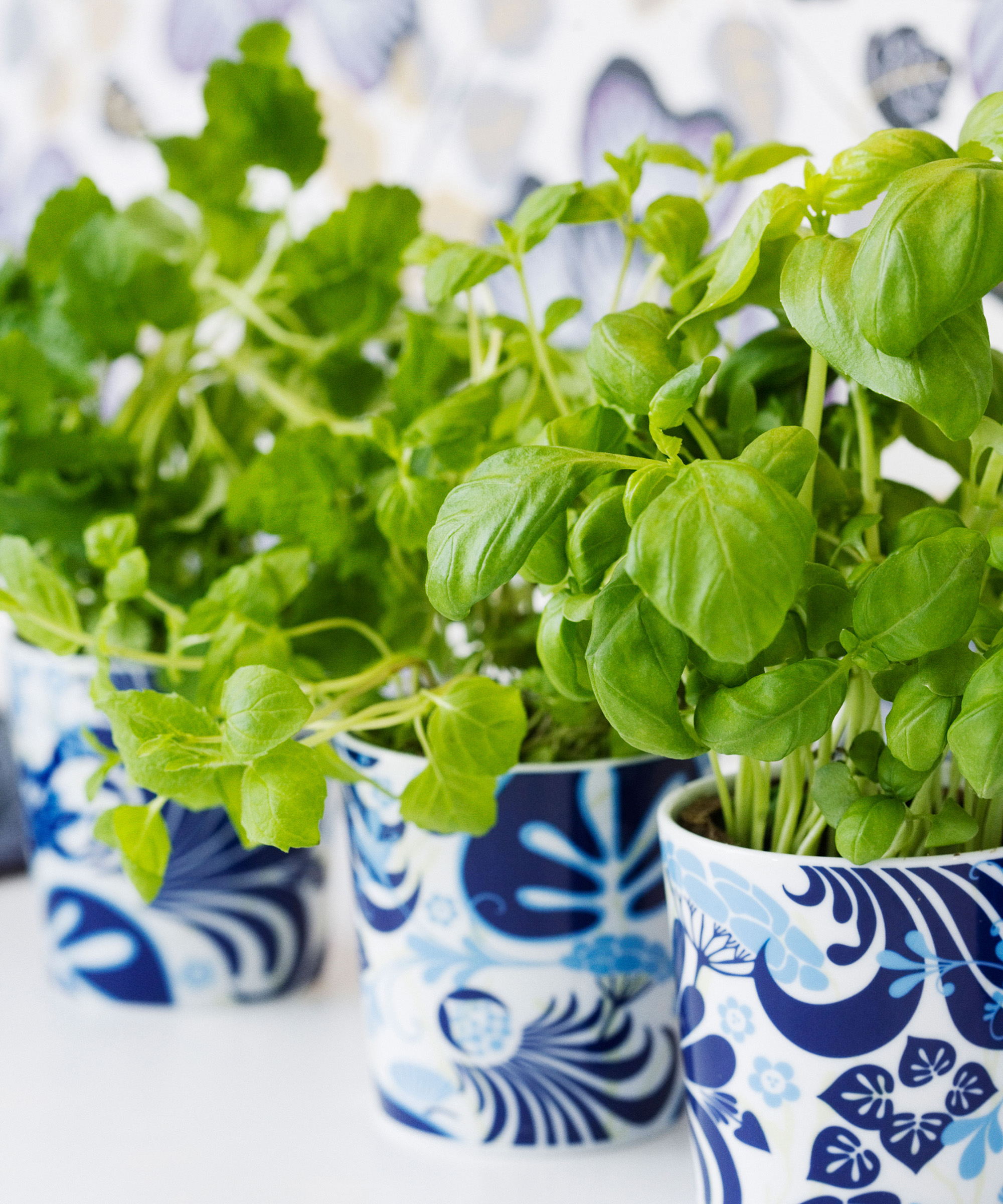
The colors of your plant pots can really affect the overall aesthetic of your indoor herb garden ideas. Make a show-stopping combination with soft pastel colors, or elegant patterns and textures.
When choosing pots for your herbs, think about their water needs, too. Herbs that prefer moist soil will do best in plastic containers, whereas terracotta pots are preferable for herbs like basil and rosemary, that flourish in drier conditions.
4. Mount pots onto a wall
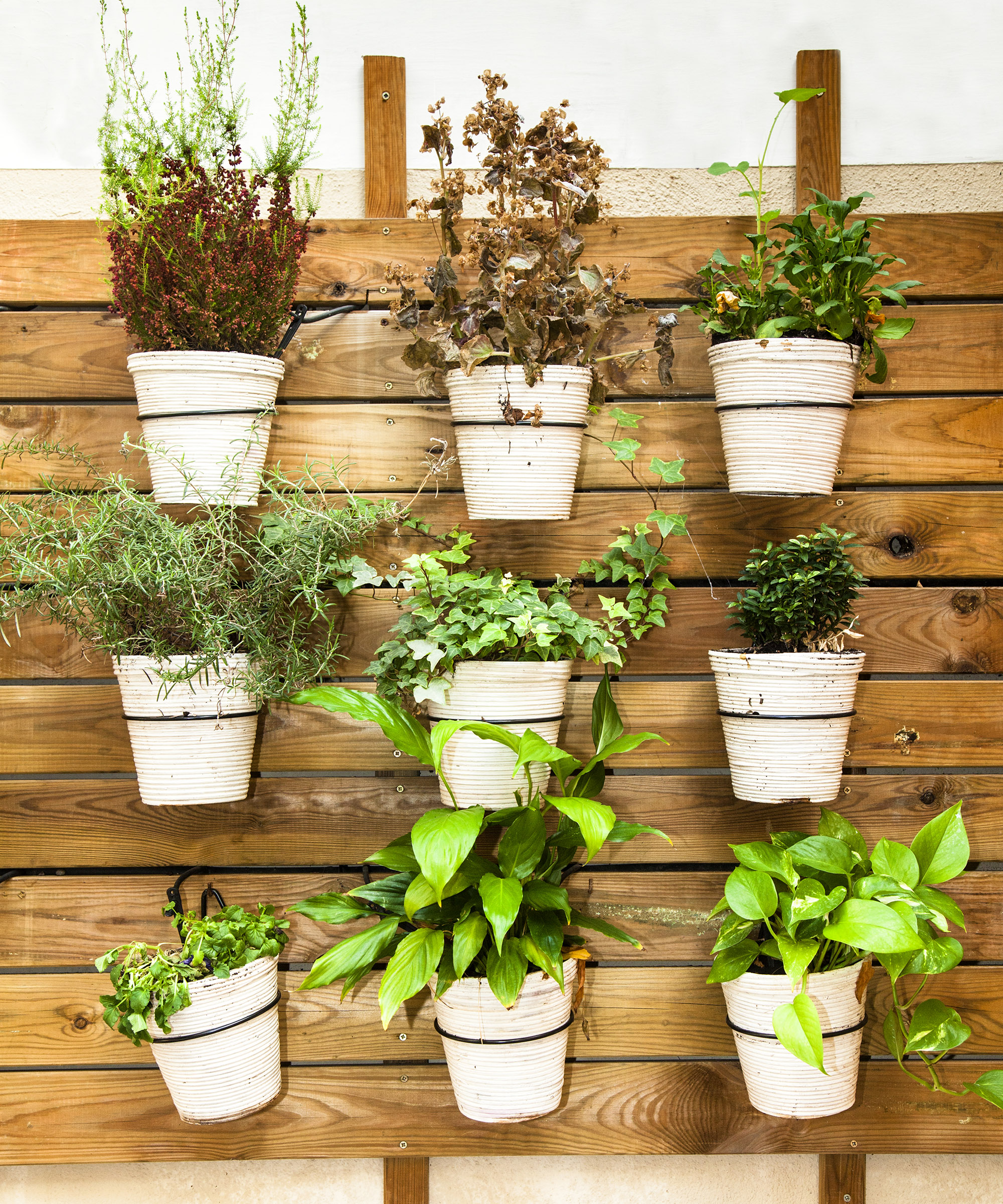
This rustic display is made from mounting a wooden panel onto a wall and fixing pots in place. This would be a DIY project, an alternative to a modular living wall system.
Vertical gardens add a wonderful sense of height to your space. And, they can help keep the herbs out of reach of curious kids and pets.
5. Plant your herbs in an indoor window box
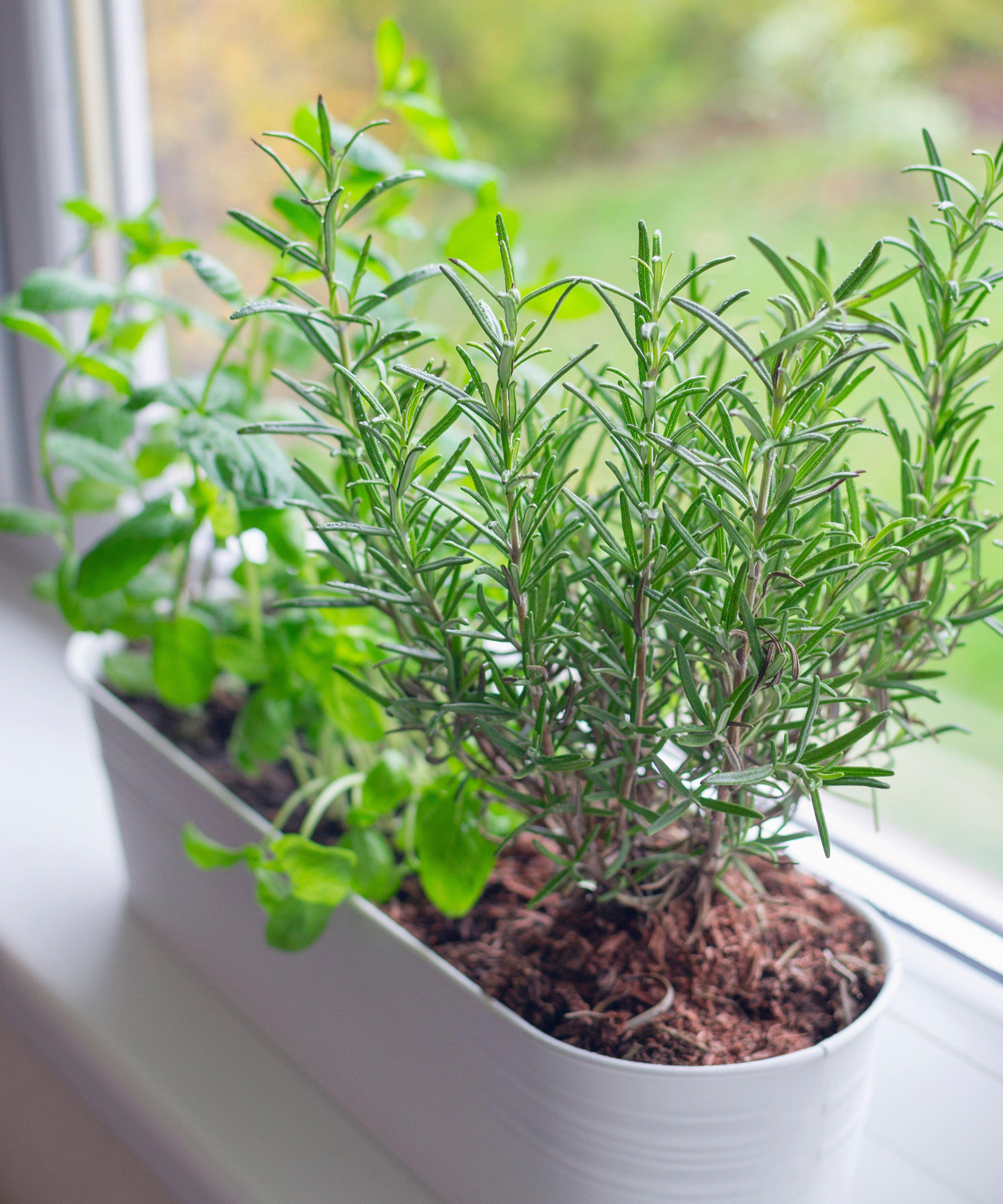
When bringing your indoor herb garden ideas to life, you need to consider the location. You're ideally looking for a bright spot, but you should avoid areas that receive too much sunlight, depending on the needs of each plant.
You’ll also want to place your indoor herb grower in an area where the air can easily circulate, so you can experience the benefit of the natural scents.
In summer, you can move your herb planter to the outer windowsill, so they can make the very most of the sun.
6. Create a rustic display
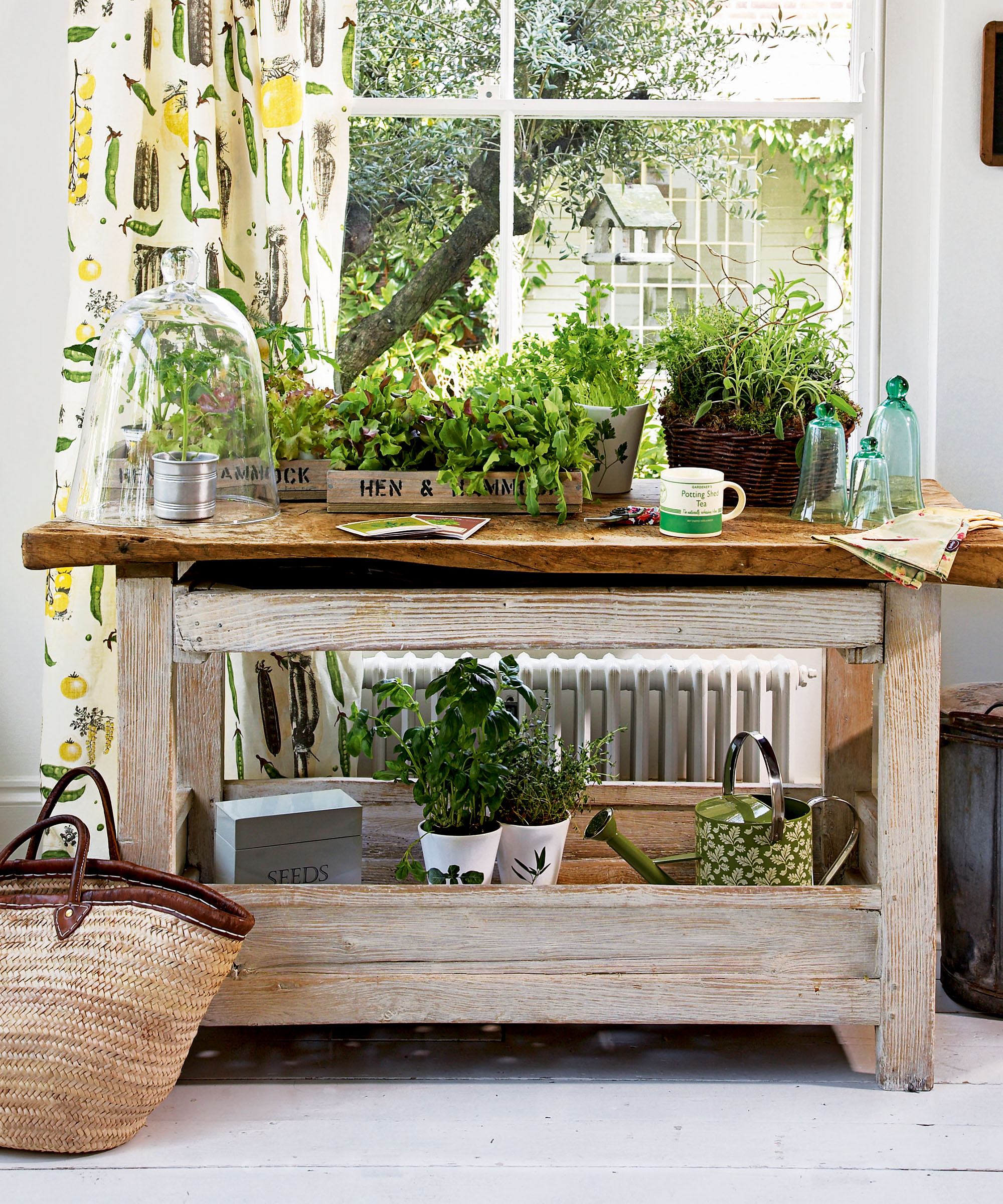
It's worth thinking about how your indoor herb garden fits with your wider aesthetic to ensure it doesn’t look out of place in your home. You could opt for simple, yet stylish modernist planters or a more rustic, traditional alternative, like this indoor potting bench style display.
'Creating a focal point for your herbs, with elevated stands, plant ladders and standing troughs is a wonderful way to draw the eye,' says Teresa.
This look isn't just for herbs – try it with indoor plants in your living room to make a contemporary statement.
7. Plant up a living tea station
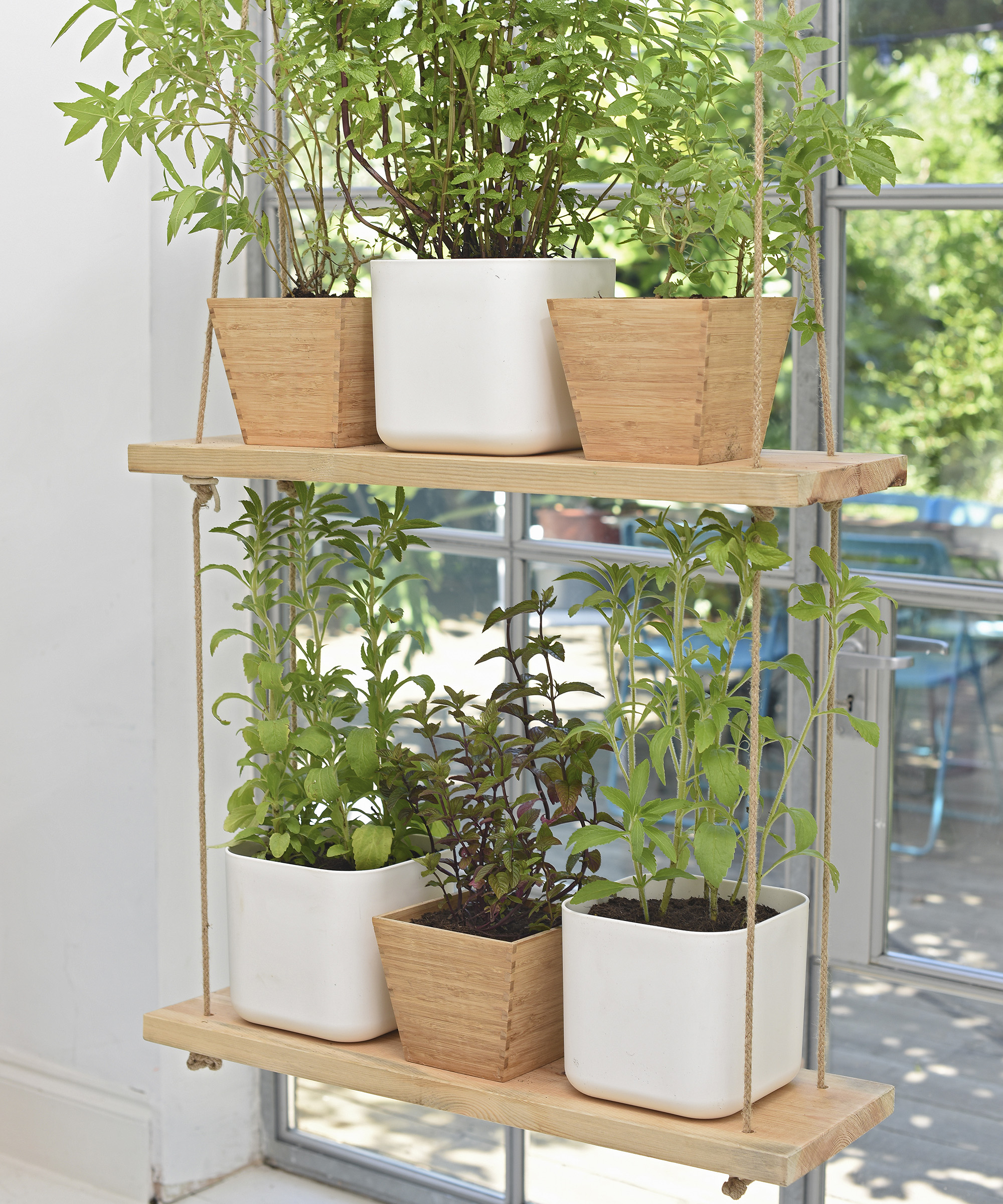
'If you're an herbal tea drinker, then a grow your own herbal tea station would serve your needs perfectly. Freshly torn leaves steeped in boiling water are as good as any store-bought blend,' says Teresa.
'My choice of tea herbs would be different varieties of mint, peppermint and chocolate mint for instance. Then lemon verbena, which is an easy herb to grow indoors and gives off a subtle citrus flavor,' she says.
FAQs
Do indoor herbs need direct sunlight?
It's best for herbs to get plenty of indirect sunlight, as direct sun can scorch their leaves.
Most herbs need a minimum of six hours of sun every day to grow sufficiently. South facing windows are the best option, followed by east and west facing windows which receive around four hours of sun in either the morning or afternoon.
If you're growing herbs indoors then why not have a go at this unconventional, but increasingly popular method of growing plants in water. Don't forget to also consider moving herbs outdoors in spring and summer.

Freelance writer and author Flora Baker is a keen amateur gardener and houseplant enthusiast. Her small garden in South London is a constant work in progress as she gets to grips with snail prevention, DIY trellises and what to plant in shady spots overrun with ivy.
